From Cargo Ship to Drone Carrier: IRGC Navy Commissioned Shahid Bahman Bagheri into Service
On February 6, the Iranian Revolutionary Guard Corps (IRGC) Navy commissioned its new homegrown drone and helicopter carrier, IRIS Shahid Bahman Bagheri (C-110-4), into its fleet in the Persian Gulf, during a ceremony in Bandar Abbas, the capital of Hormozgan province. Senior military officials were present at the event, including Major General Mohammad Bagheri, the Chief of General Staff of the Iranian Armed Forces, and Rear Admiral Alireza Tangsiri, the Commander of the Revolutionary Guard Naval Forces.
The IRIS Shahid Bagheri is the result of converting the commercial cargo ship PERARIN (IMO 9209350), built in 2000, into a warship. This approach is not new for Iran, which is under an embargo and experiencing an economic crisis. Iran has previously converted large commercial and tanker ships into military navy vessels. Notable examples include the IRIS Makran forward base ship, IRIS Shahid Roudaki, and IRIS Shahid Mahdavi warships.
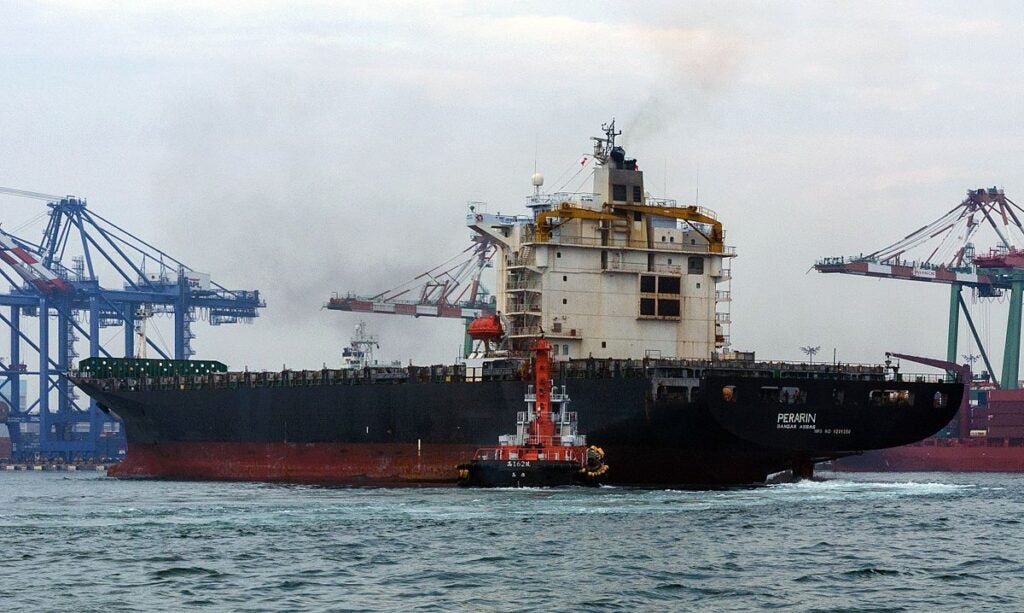
Named after an Iranian Revolutionary Guard Corps (IRGC) commander who was killed in the Iran-Iraq War (1980–1988), Bagheri’s conversion began in early 2022 at the Iran Shipbuilding and Offshore Industries Complex (ISOICO), located 37 km west of Bandar Abbas. ISOICO was also responsible for converting the other naval platforms mentioned above. The shipyard, a subsidiary of the Industrial Development and Renovation Organization of Iran (IDRO), is also converting another unnamed merchant vessel to give it a military role.
IRIS Shahid Bahman Bagheri, displacing approximately 41,000 thousand tons, 240 meters long, and 27 meters wide, is one of the largest vessels in the Iranian Revolutionary Guard Corps (IRGC) Navy. According to the Iranian press, a MAN B&W Type 8 S70 MC-C diesel engine propels the vessel to reach a top speed exceeding 20 knots and a maximum range of 22,000 nautical miles. In addition, the carrier, capable of operating in Sea State 9, can conduct sustained operations without refueling throughout the year.
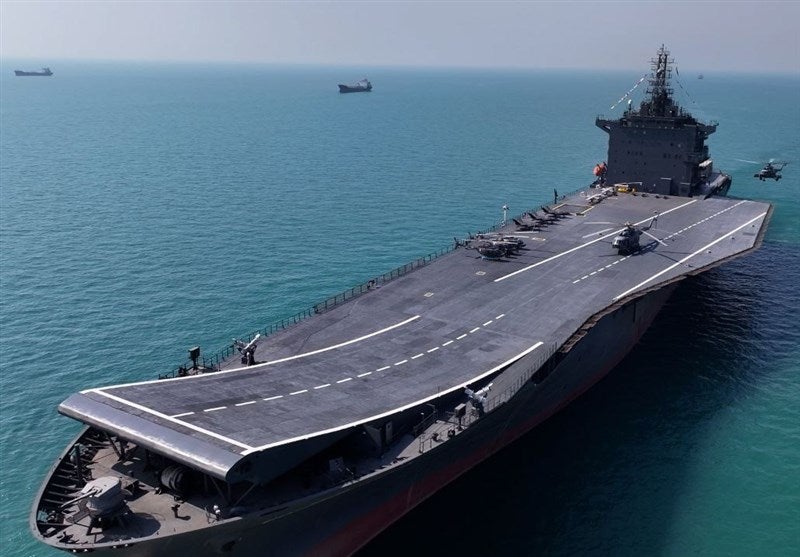
The “drone carrier” has a 180-meter flight deck designed to support the take-off and landing of various reconnaissance and attack UAVs and a ski jump ramp integrated into the bow. It also has extensive support infrastructure, including elevators to transport UAVs between the hangar and the flight deck, arresting cables for controlled recovery operations, and barriers to ensure safe landings.
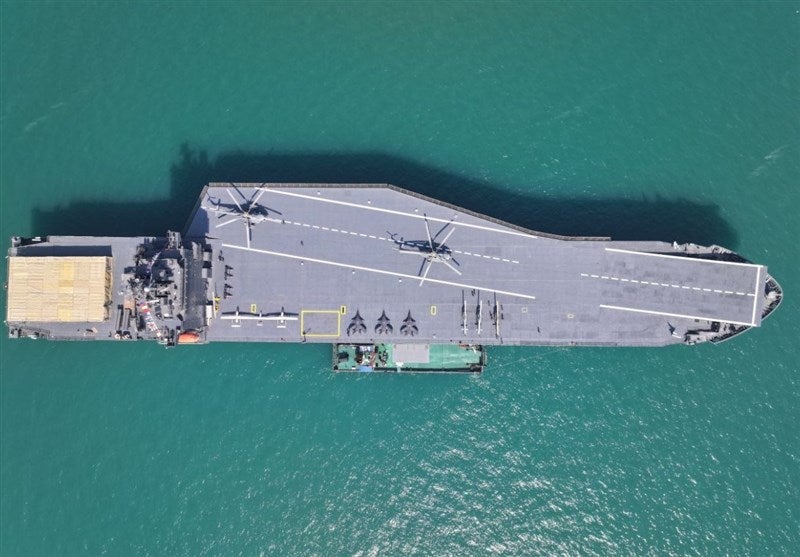
Iranian media has not revealed how many UAVs the carrier can house on its flight deck and hangar or specified which models will be used. However, state television’s footage of the handover ceremony provided some clues. Among the aircraft on the deck, a small armed attack drone derived from the Qaher-313 project named JAS-313 stands out. This unmanned system, on display for the first time, is allegedly powered by a turbofan engine called Jahesh-700 and has an internal compartment, possibly capable of carrying missiles or precision-guided munitions. Other UAVs showcased include the Ababil-3N, Homa VTOL drones, and the Mohajer-6.
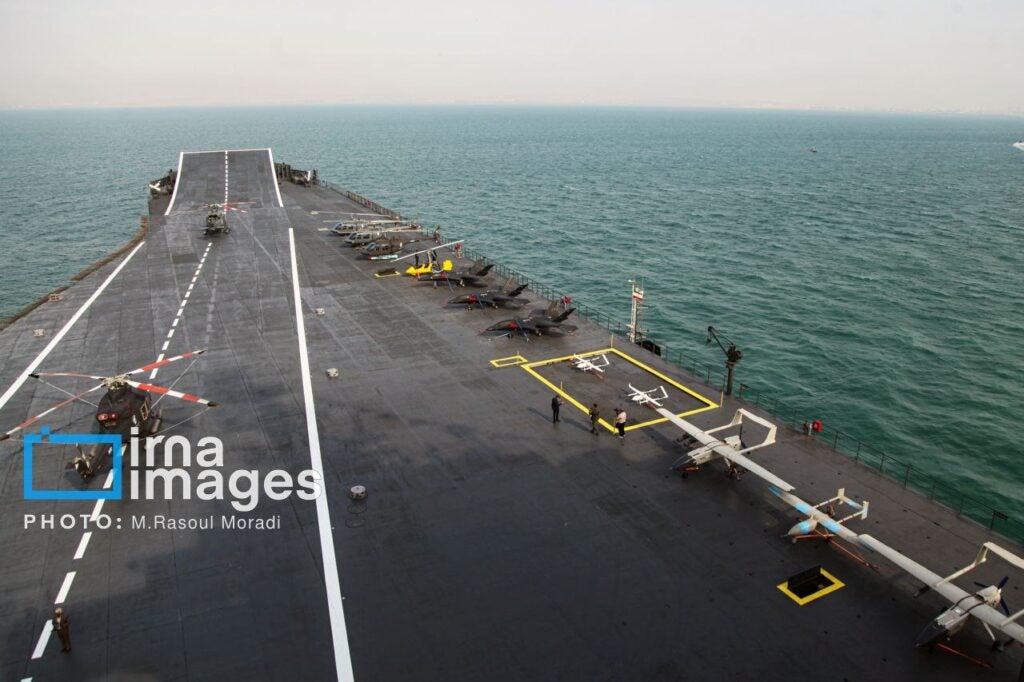
Shahid Bagheri can carry not only unmanned aerial vehicles (UAVs) but also light and medium-class helicopters, such as the Bell-206 (with Nasr anti-ship missile) and the Mi-171 (with UB-32 rocket pods for 57mm S-5 rockets) along with up to 30 Taregh-class Fast Attack Craft (FAC). Equipped with four Kowsar missiles, effective against surface and air targets, the Taregh class boats can reach a maximum speed of 46 knots (85 km/h) and a range of 500 nautical miles, thanks to 2 × Seatek 6-4V-9 diesel engines, each producing 1,160 horsepower (0.87 MW). Given the IRGC navy’s rich inventory of speedboats, it is likely that the carrier will also host Zolfaqar, Ashura, Heidar, and Miyad class boats and guided [crewless] underwater vessels in the future.
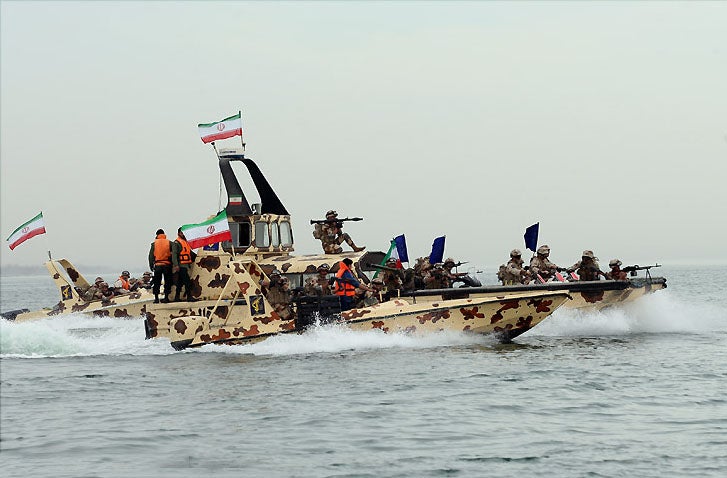
The visible weapon systems of the carrier are as follows:
- 8 cruise anti-ship missiles
- 8 multipurpose Kowsar-222
- 1 turret with a 30mm automatic cannon
- 2 20mm Gatling-type cannons (unconfirmed)
- 2 RC turrets with 20mm Gatling-type cannons
The Commander of the IRGC Navy, Rear Admiral Alireza Tangsiri, described the integration of Shahid Bagheri into the IRGC Navy fleet as a significant step in enhancing the Islamic Republic of Iran’s defense and deterrence capabilities in distant waters and ensuring the security of the nation’s national interests. Tangsiri reiterated the IRGC’s and the regular military’s firm commitment to safeguarding maritime security and ensuring economic stability.
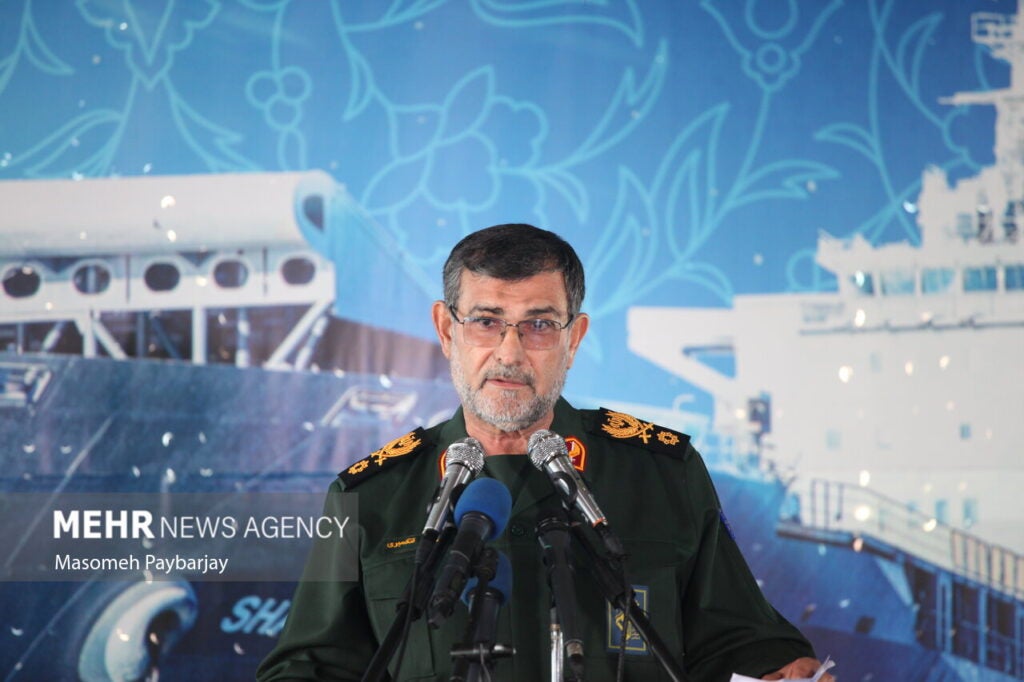
Iran’s Chief of General Staff, Major General Mohammad Baqeri, described the Shahid Bagheri drone carrier as a strategic asset, providing Iran with a mobile base to safeguard its national interests in distant waters. Bagheri continued: “As foreign powers operate near Iran’s territorial waters, we will also assert our legal right to operate in international waters to secure our maritime routes and ensure the safety of Iranian shipping.”
While Iranian officials have praised the strategic necessity of the IRIS Shahid Bahman Bagheri drone carrier, it is debatable whether they need such a naval platform given the IRGC’s traditional naval doctrine to date. In a nutshell, this doctrine, which was shaped by the international embargoes imposed on Tehran after the Islamic Revolution, prioritizes the defense of the narrow and shallow waters of the Strait of Hormuz through tactics such as swarm attacks and hit-and-run strategies with naval assets such as small fast attack boats rather than a traditional naval structure. For this reason, the naval forces of the Revolutionary Guards currently lack the logistical infrastructure to support Shahid Bagheri in overseas operations and capable escort vessels to protect him against air and underwater threats. In conclusion, time will tell whether the Shahid Bagheri is a capable and necessary naval platform as claimed or a symbolic military asset for local and regional prestige.

